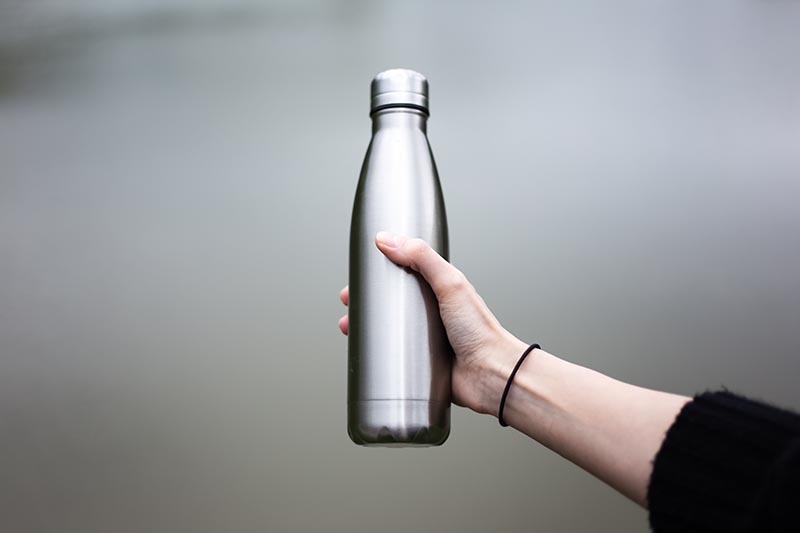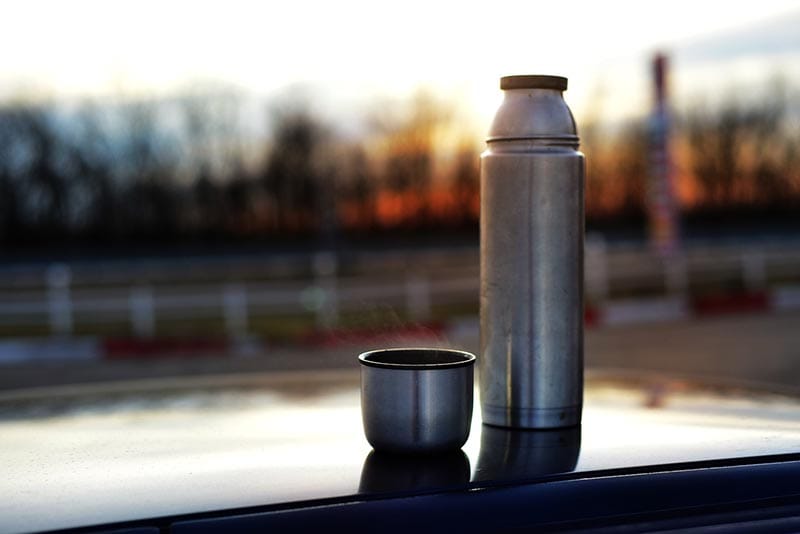Can You Microwave a Thermos? (Microwave Safety Tips)
-
Greg Iacono
- Last updated:

When the vacuum flask, later renamed the Thermos, was invented in 1892, Sir James Dewar never imagined his device’s effect on humanity. The same can be said for the microwave oven, a device accidentally created by Percy Spencer in 1945. However, can you microwave a thermos? The answer is a definite no. From the manufacturer, we found this advice: DO NOT place in a microwave or any oven or on or near other heat source [sic] which may damage the product. Plastic can melt and burn.
Knowing this critical safety information, you probably have more questions, which is the best reason to read on, as we’ve got answers for you below!
What Happens If You Microwave a Thermos?
It’s important to realize that there are no good outcomes if you try to heat a thermos in the microwave (and the contents within). First and foremost, microwaves can’t penetrate metal, and since a thermos usually has metal on the outside, anything inside would not get heated. Next, if your thermos has any plastic parts (which most do), those parts can melt and catch on fire if your thermos is in the microwave long enough.
Can You Microwave a Coffee Thermos?
Let’s say you have a thermos you only use for coffee. Can you place that thermos in the microwave? If it’s made of metal, as most are, or has plastic parts, as most do, the answer is no.

How to Heat a Thermos Before Use
Many consider heating a thermos in their microwave before placing food inside. That way, most believe, their food will stay warm longer. However, it’s not necessary to heat the inside of a thermos to keep food hot, as that’s precisely what a thermos does to begin with. Heating it before filling it might keep your food warmer for a tiny amount of extra time but not much. Still, if you want to heat your thermos before filling it with soup, coffee, or other hot food, below is a step-by-step guide.
- Boil water the traditional way
- Pour the heated water into your thermos
- Let the water stay in your thermos for about 10 minutes
- Pour out the water
- Pour in your food
What Happens If You Pour Boiling Water Into a Thermos?
If done safely, pouring boiling water (or soup, coffee, tea, etc.) into a thermos is not a problem. Indeed, a thermos is made to hold hot liquids of all kinds, so it should be just fine. We recommend pouring the boiling water over the sink using the usual safety precautions to prevent scalding. Also, unless it needs to be boiling, there’s no need to make something extra hot when placing it in a thermos. Once closed, the average thermos will keep substances hot for hours, if not days.
Can a Thermos Go in the Refrigerator or Freezer?
There’s no problem putting a thermos in the fridge and leaving it there as long as you like. The freezer, however, is another story. Freezing water or another liquid in your thermos might cause the inner glass container to crack or be destroyed.
Does a Thermos Need to Be Heated Before Putting Food Inside?
The inner wall of a thermos quickly equalizes with the temperature of anything poured into it. For example, if you pour hot soup, the inner walls would be the same temperature within seconds. The same can be said for pouring in an ice-cold beverage. The walls might absorb or emit a minuscule amount of heat, but it’s negligible. In short, it’s not necessary to either heat or cool a thermos ahead of time for it to work correctly and keep your food hot or cold for a long time.
Can You Microwave a Thermos Cup?
High-density polyethylene (HDPE) and polypropylene (PP) are typically safe to be microwaved. However, other types of plastic, including polyethylene terephthalate (PETE) and polystyrene (PS), can easily melt due to the immense heat microwaves produce. Since most thermos cups are made from the latter plastics, putting them in the microwave is not recommended. However, if your thermos cup is made from the former, it should be okay to nuke.
One further note is that plastics usually have chemicals, including BPA and phthalates, known to affect your health negatively. Both substances, for example, can affect hormones like testosterone and estrogen. BPA, in particular, can force your body to create more cancer cells and cause obesity as it slows down the breakdown of sugar and fats.
Conclusion
Microwaving a thermos is not a good idea. The other shell of a thermos is metal, and metals should never go in the microwave. Also, any plastic parts on your thermos can melt and catch fire in a microwave. Lastly, but most importantly, it’s unnecessary to heat (or chill) a thermos before use. The device accepts hot and cold items and almost immediately retains the same temperature. In most cases, that temp will stay the same for hours.
You might also like:
- Is Rubbermaid Microwave-Safe? (Microwave Safety Tips)
- Is CorningWare Microwave Safe? (Microwave Safety Tips)
- Can You Microwave A Thermos? (Microwave Safety Tips)
- Can You Microwave Paper Cups? Risks & Safety Tips
- https://canyoumicrowavethis.com/can-you-microwave-a-thermos-is-it-safe/
- https://foodsguy.com/can-you-put-thermos-in-microwave/
- https://thermos.com/pages/history#:~:text=In%201892%2C%20Scottish%20scientist%20Sir,between%20the%20two%20bottle%20walls.
- https://celcook.ca/the-accidental-invention-of-the-microwave/#:~:text=The%20microwave%20was%20invented%20accidentally,had%20melted%20from%20the%20heat.
- https://www.thermos.com.au/careuselunchkits.aspx#:~:text=DO%20NOT%20place%20in%20a%20microwave%20or%20any%20type%20of,Plastic%20can%20melt%20and%20burn.
- https://epackagesupply.com/blog/a-quick-guide-to-microwavesafe-plastics-/
Featured Image Credit: Lalandrew, Shutterstock
Contents
